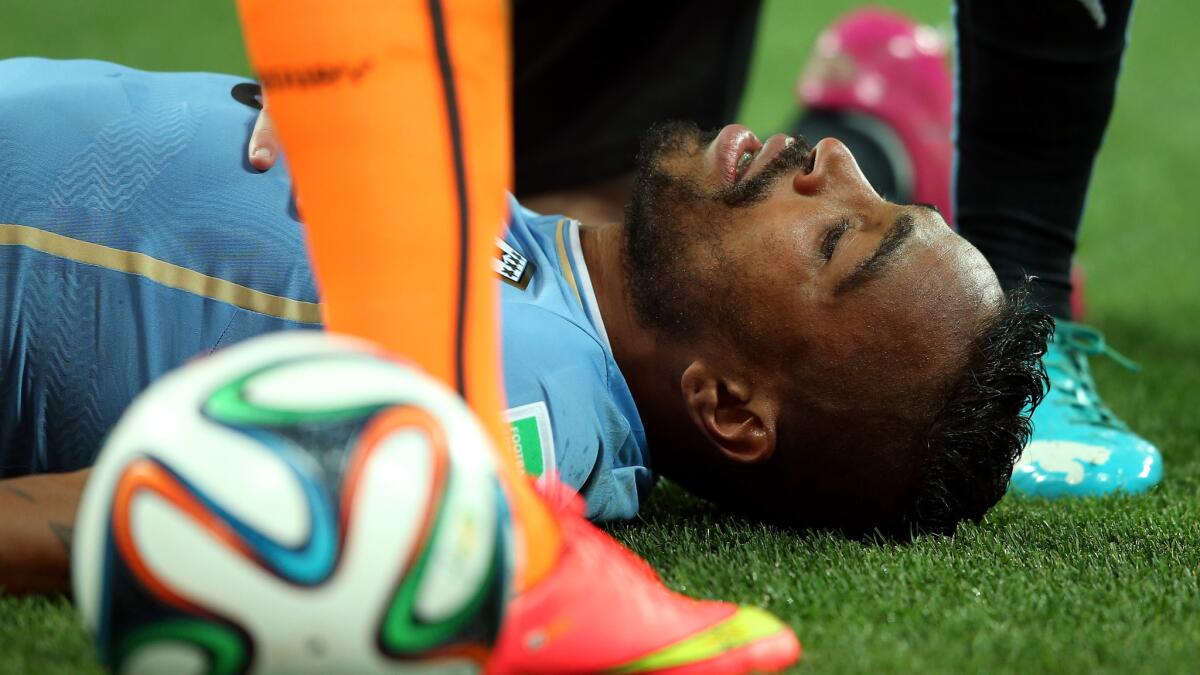Alvaro Pereira injury highlights FIFA’s lack of concussion protocol

- Share via
Uruguay was nursing a 1-0 lead Thursday over England and eager to burn clock with a half-hour remaining when its midfielder, Alvaro Pereira, crumpled to the turf. On ESPN, veteran announcer Ian Darke, who has seen his share of faked injuries, sarcastically expressed shock at the sight of another Uruguayan down.
Then replays showed Pereira absorbing an inadvertent knee to the temple from England’s Raheem Sterling. A close-up conveyed a barely conscious player who should have been removed.
But Pereira demanded to return to the field, over the objections of his team’s doctor, and he soldiered on for the balance of the game.
The phrase “concussion protocol” has become embedded in the language of U.S. sports, but FIFA is behind the curve. Its designated physicians waited until after the game to check Pereira, who was diagnosed as concussion-free. The team doctor apparently wields no power, which mirrors the NFL before the procedure was corrected.
On Friday, the players union, Fifpro, complained to FIFA that it lacks the necessary safeguards to protect athletes who are in no position to decide their fate. Machismo is too often allowed to overrule common sense.
That can be rectified with an improved system. Harder to fix is a longtime tolerance for feigning injuries -- which takes on the aura of performance art -- that should be eliminated because it can lead to misunderstandings in cases such as Pereira’s.
One apology ensued. On-air, Darke acknowledged his error.
More to Read
Go beyond the scoreboard
Get the latest on L.A.'s teams in the daily Sports Report newsletter.
You may occasionally receive promotional content from the Los Angeles Times.







